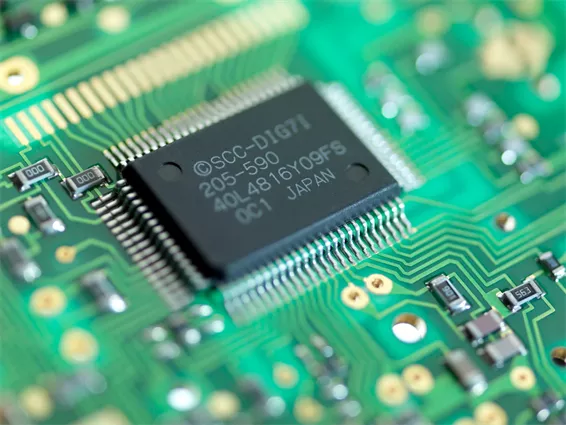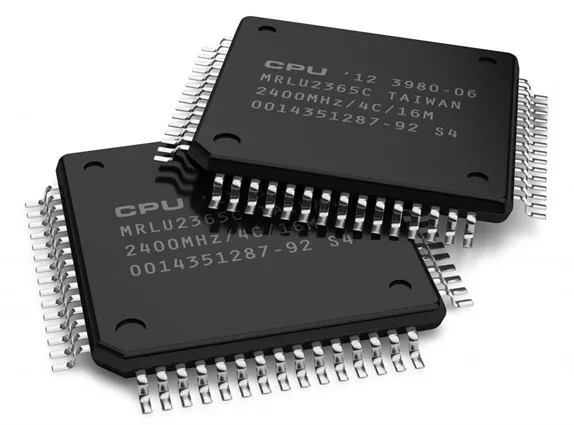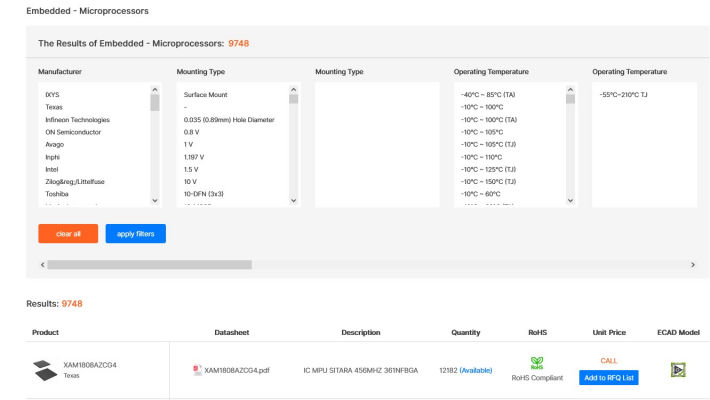OUTLINE:
How Is a Microprocessor Different from an Integrated Circuit
 207
207In the tech realm, the question often arises, "How is a microprocessor different from an integrated circuit?" This article aims to answer that question in detail.

Defining the Components: Microprocessors and Integrated Circuits
A microprocessor is a type of integrated circuit designed to perform complex functions, primarily processing instructions from a computing device.
On the other hand, an integrated circuit is a set of electronic components, like transistors and resistors, embedded in a semiconductor material. It can serve various functions depending on its design and complexity
What is a Microprocessor
A microprocessor, a sophisticated type of integrated circuit, carries out complex tasks, predominantly processing instructions for computers and related devices.

What is an Integrated Circuit
An integrated circuit cradles a series of electronic components like transistors and resistors, implanted on a semiconductor substrate, and can have diverse functionalities.
.webp)
Key Differences Between Microprocessors and Integrated Circuits
Microprocessors and integrated circuits, while linked, have significant differences. A microprocessor's primary function is processing, while an integrated circuit can perform several functions. Microprocessors are complex, while some integrated circuits can be relatively simple. Microprocessors find their use primarily in computing, while integrated circuits have a broader range of applications in electronics.
Function: Processing vs. Multifunction
While the main function of a microprocessor is performing arithmetic and logical operations or controlling other devices, an integrated circuit may serve a variety of functions, including amplifying signals, acting as computer memory, or even comprising a whole microprocessor.
Complexity: High vs. Simple
Microprocessors are notably complex due to the large number of transistors and the tasks they perform. On the other hand, integrated circuits can range from very simple, such as amplifiers, to highly complex, such as microprocessors or memory chips.
Applications: Computing vs. Electronics
Given their processing abilities, microprocessors predominantly feature in computing-facing applications, symbolizing the core of devices like PCs and servers. In contrast, integrated circuits, due to their versatility, reflect in a spanning range of electronic gadgets and systems.
Detailed Examination of Microprocessors
A microprocessor's structure consists of the control unit, arithmetic logic unit (ALU), and memory unit. It is at the heart of modern devices like computers, smartphones, and gaming consoles, driving their processing power.
Structure of a Microprocessor
Housing control and arithmetic logic units along with memory locations, a microprocessor's structure enables it to execute a series of operations. This intricate design contributes to its immense processing strength, allowing it to swiftly execute instructions.
Role and Use in Modern Technology
Microprocessors lie at the heart of almost all present-day digital apparatuses. From computers and smartphones to gaming consoles and intelligent home devices, these components enhance processing ability and, subsequently, device performance.
In-depth Look at Integrated Circuits
An integrated circuit's structure varies depending on its type and function. They can be found in a variety of devices, from simple electronic toys to advanced medical equipment.
Structure of an Integrated Circuit
The design and layout of an integrated circuit largely depend on its intended function. Some consist of a small set of components and serve simple functions, while others, like microprocessors, are complex networks of millions or even billions of components.
Various Types and Their Uses
Given their variety, integrated circuits find approval across an expansive range of applications. Simple ICs feature in electronic toys and home appliances, while complex ICs drive sophisticated medical equipment and supercomputers.
Role of Microprocessors and Integrated Circuits in the Tech Industry
Microprocessors and integrated circuits have revolutionized technology, enabling the development of increasingly powerful and compact devices. Future trends point towards further miniaturization and increased performance.
Impact on the Evolution of Technology
Microprocessors and integrated circuits have significantly shaped the technological world. Owing to their minute size and massive functionality, they have revolutionized and inspired the emergence of compact, yet powerful devices.
Future Trends
Going forward, trends point towards incessant miniaturization of these components and an uptick in their performance and capabilities. The tech industry is likely to see a rise in the use of smaller, more powerful, and more energy-efficient microprocessors and integrated circuits.
Where to Buy Microprocessors
Chipsmall Limited's professional team has an average of more than 20 years of experience in the distribution of electronic components. Hailing from Hong Kong, we have forged strong and mutually beneficial commercial ties with clients in Europe, America, and South Asia, providing them with obsolete and difficult-to-find parts to suit their unique requirements.
You can filter the different types you need to find the suitable microprocessor here.

Other Top Manufacturers of Microprocessors and Integrated Circuits
Leading manufacturers of microprocessors and integrated circuits include Intel Corporation, AMD, Qualcomm, Texas Instruments, and Samsung Electronics. Each has made significant contributions to advancing technology.
Intel Corporation
Intel is a driving force in the tech world. Highly recognized for its high-performance microprocessors, the company has been instrumental in shaping the face of digital computation and communication.
AMD
A significant competitor of Intel, AMD is renowned for its innovative approach to designing microprocessors. They cater to a wide variety of applications, from personal computers to server systems, asserting a strong market presence.
Qualcomm
Qualcomm specializes in chip manufacturing, particularly controllers and processors for mobile devices. The company's microprocessors are integral to numerous smartphones worldwide, underlining the quality and efficiency of their products.
Texas Instruments
Texas Instruments is a prominent player in the integrated circuits market. Their versatile chips find applications in different industries - from education and consumer electronics to automotive and industrial sectors.
Samsung Electronics
Samsung Electronics has a massive global footprint, manufacturing a wide array of products, including microprocessors and integrated circuits. Samsung plays a crucial role in the mobile industry, offering powerful processors for their devices and other tech manufacturers.
Conclusion
In conclusion, understanding how a microprocessor is different from an integrated circuit involves knowing its structures, functions, and applications. While both are integral parts of modern electronic devices, they serve different purposes and have varying levels of complexity. As technology continues to evolve, we can expect further advancements in these crucial components.

Disclaimer: The views and opinions expressed by individual authors or forum participants on this website do not represent the views and opinions of Chipsmall, nor do they represent Chipsmall's official policy.

share this blog to:

